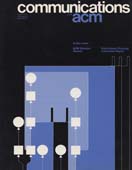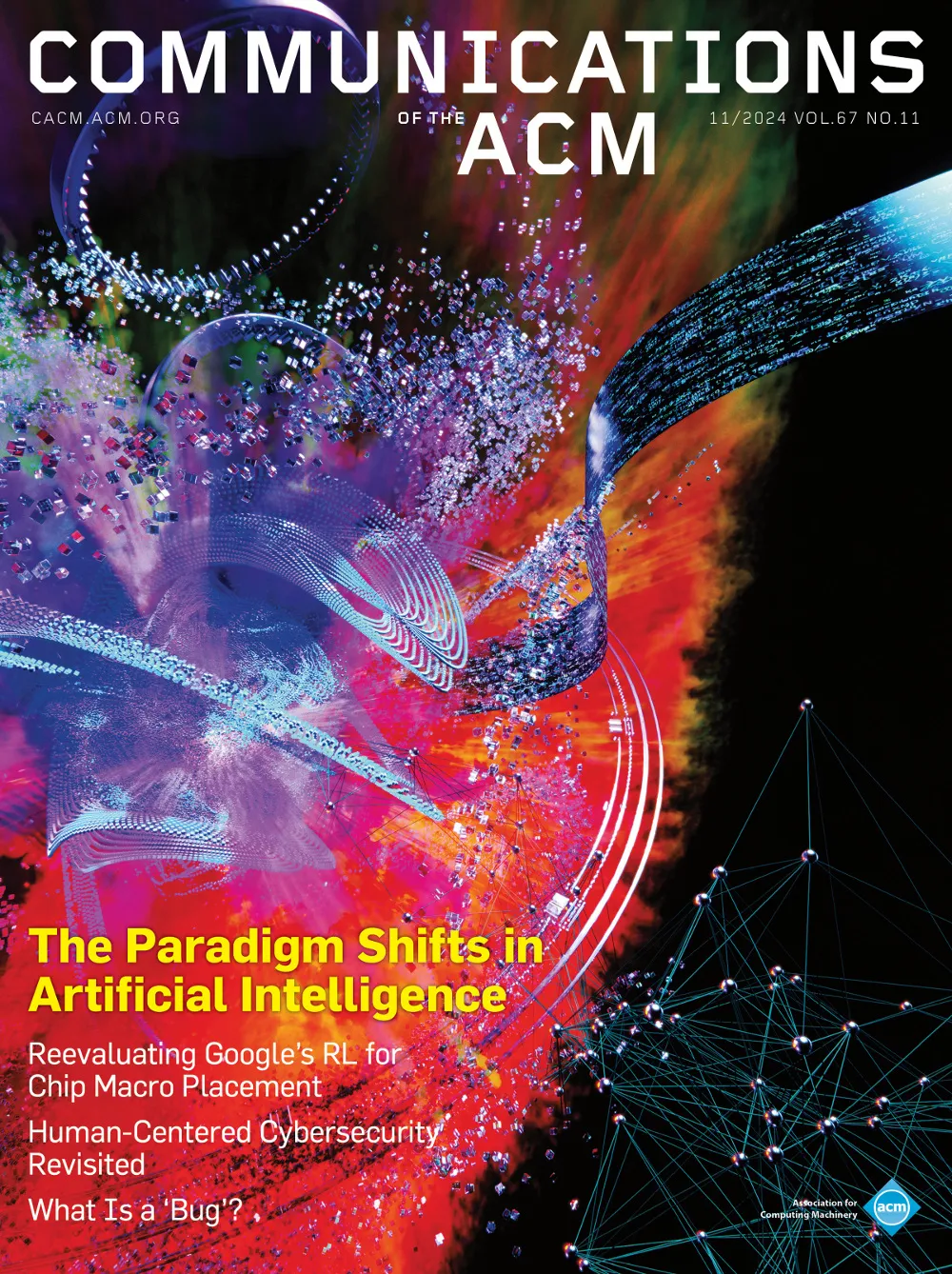June 1978 - Vol. 21 No. 6

Features
An optimal method for deletion in one-sided height-balanced trees
A one-sided height-balanced tree is a binary tree in which every node's right subtree has a height which is equal to or exactly one greater than the height of its left subtree. It has an advantage over the more general AVL tree in that only one bit of balancing information is required (two bits are required for the AVL tree).
It is shown that deletion of an arbitrary node of such a tree can be accomplished in O(log n) operations, where n is the number of nodes in the tree. Moreover the method is optimal in the sense that its complexity cannot be reduced in order of magnitude. This result, coupled with earlier results by Hirschberg, indicates that, of the three basic problems of insertion, deletion, and retrieval, only insertion is adversely affected by this modification of an AVL tree.
A selective traversal algorithm for binary search trees
The problem of selecting data items from a binary search tree according to a list of range conditions is considered. The process of visiting a minimal number of nodes to retrieve data satisfying the range conditions is called selective traversal. Presented in this paper is an algorithm for selective traversal which uses a tag field for each node in the tree. The algorithm is particularly useful and efficient when examination of data is more time consuming than examination of a tag field.
Analyses of deterministic parsing algorithms
This paper describes an approach for determining the minimum, maximum, and average times to parse sentences acceptable by a deterministic parser. These quantities are presented in the form of symbolic formulas, called time-formulas. The variables in these formulas represent not only the length of the input string but also the time to perform elementary operations such as pushing, popping, subscripting, iterating, etc. By binding to the variables actual numerical values corresponding to a given compiler-machine configuration, one can determine the execution time for that configuration. Time-formulas are derived by examining the grammar rules and the program representing the algorithm one wishes to analyze. The approach is described by using a specific grammar that defines simple arithmetic expressions. Two deterministic parsers are analyzed: a top-down recursive descent LL(1) parser, and a bottom-up SLR(1) parser. The paper provides estimates for the relative efficiencies of the two parsers. The estimates applicable to a specific machine, the PDP-10, are presented and substantiated by benchmarks. Finally, the paper illustrates the proposed approach by applying it to the analyses of parsers for a simple programming language.
Automatic error recovery for LR parsers
In this paper we present a scheme for detecting and recovering from syntax errors in programs. The scheme, which is based on LR parsing, is driven by information which is directly and automatically obtainable from the information that is already present in an LR parser. The approach, which is patterned after that of Levy and Graham and Rhodes, appears to provide error recovery which is both simple and powerful.
Characteristics of application software maintenance
Maintenance and enhancement of application software consume a major portion of the total life cycle cost of a system. Rough estimates of the total systems and programming resources consumed range as high as 75-80 percent in each category. However, the area has been given little attention in the literature. To analyze the problems in this area a questionnaire was developed and pretested. It was then submitted to 120 organizations. Respondents totaled 69. Responses were analyzed with the SPSS statistical package. The results of the analysis indicate that: (1) maintenance and enhancement do consume much of the total resources of systems and programming groups; (2) maintenance and enhancement tend to be viewed by management as at least somewhat more important than new application software development; (3) in maintenance and enhancement, problems of a management orientation tend to be more significant than those of a technical orientation; and (4) user demands for enhancements and extension constitute the most important management problem area.
Some basic determinants of computer programming productivity
The purpose of this research was to examine the relationship between processing characteristics of programs and experience characteristics of programmers and program development time. The ultimate objective was to develop a technique for predicting the amount of time necessary to create a computer program. The fifteen program characteristics hypothesized as being associated with an increase in programming time required are objectively measurable from preprogramming specifications. The five programmer characteristics are experience-related and are also measurable before a programming task is begun. Nine program characteristics emerged as major influences on program development time, each associated with increased program development time. All five programmer characteristics were found to be related to reduced program development time. A multiple regression equation which contained one programmer characteristic and four program characteristics gave evidence of good predictive power for forecasting program development time.
Automated welfare client-tracking and service integration: the political economy of computing
The impacts of an automated client-tracking system on the clients, caseworkers, administrators, and operations of the welfare agencies that use it are reported. The major impact of this system was to enhance the administrative attractiveness of the using agencies in the eyes of funders rather than to increase their internal administrative efficiency. This impact is a joint product of both the technical features of the computer-based system and of the organizational demands placed upon different agencies, administrators, and caseworkers. It illustrates the way “successful” automated information systems fit the political economies of the groups that use them.
Performance of rollback recovery systems under intermittent failures
A mathematical model of a transaction-oriented system under intermittent failures is proposed. The system is assumed to operate with a checkpointing and rollback/recovery method to ensure reliable information processing. The model is used to derive the principal performance measures, including availability, response time, and the system saturation point.
General equations for idealized CPU-I/O overlap configurations
General equations are derived for estimating the maximum possible utilization of main storage partitions, CPU and I/O devices under different conditions in an idealized CPU-I/O overlap model of multiprogrammed computer systems. The equations are directly applicable to any configuration consisting of sets of identical CPU's, I/O processors, main storage partitions and user tasks. Examples are provided to illustrate the use of the equations to compute effective processing time per record and expected timesharing response time under both balanced and unbalanced resource utilization conditions.



